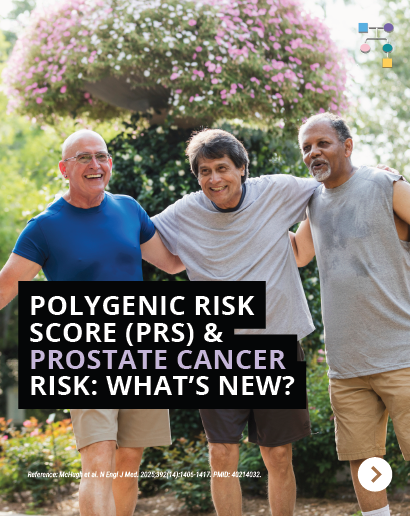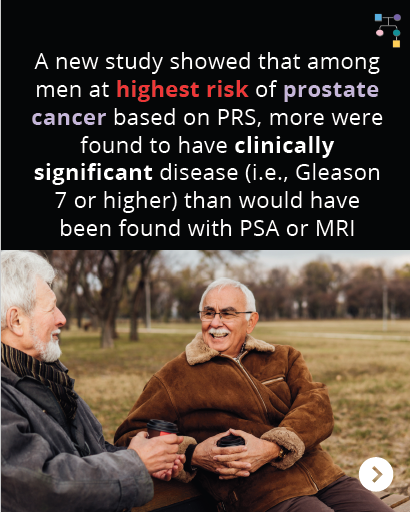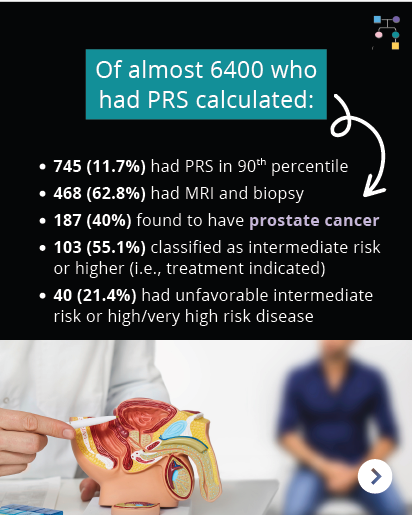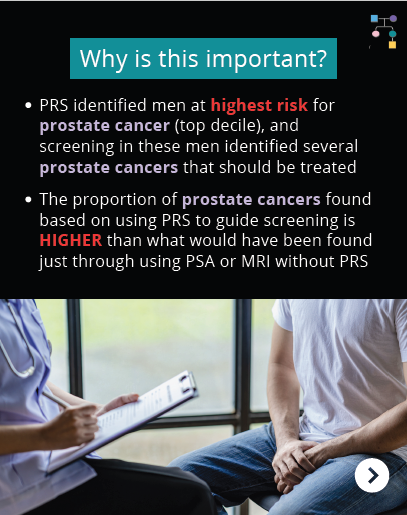





A recent study showed that among men at highest risk for prostate cancer based on Polygenic Risk Score (PRS), more were found to have clinically significant disease (i.e., Gleason 7 or higher) than would have been found with PSA or MRI.
In nearly 6,400 men who had PRS calculated:
➡️ 745 (11.7%) had PRS in 90th percentile
➡️ 468 (62.8%) had MRI and biopsy
➡️ 187 (40%) were found to have prostate cancer
➡️ 103 (55.1%) had intermediate risk or higher (i.e., treatment indicated)
➡️ 40 (21.4%) had unfavorable intermediate risk or high/very high risk disease
Without PRS-based risk assessment, nearly 72% of those cases would not have been detected (based on screening per current guidelines in the United Kingdom)
💡 Why this matters:
PRS can pinpoint men at highest risk for prostate cancer, allowing for earlier detection of treatable prostate cancers-offering a chance for better outcomes and more personalized care.
🔗 Learn more: https://www.nejm.org/doi/full/10.1056/NEJMoa2407934
Reference: McHugh et al. N Engl J Med. 2025;392(14):1406-1417. PMID: 40214032.
